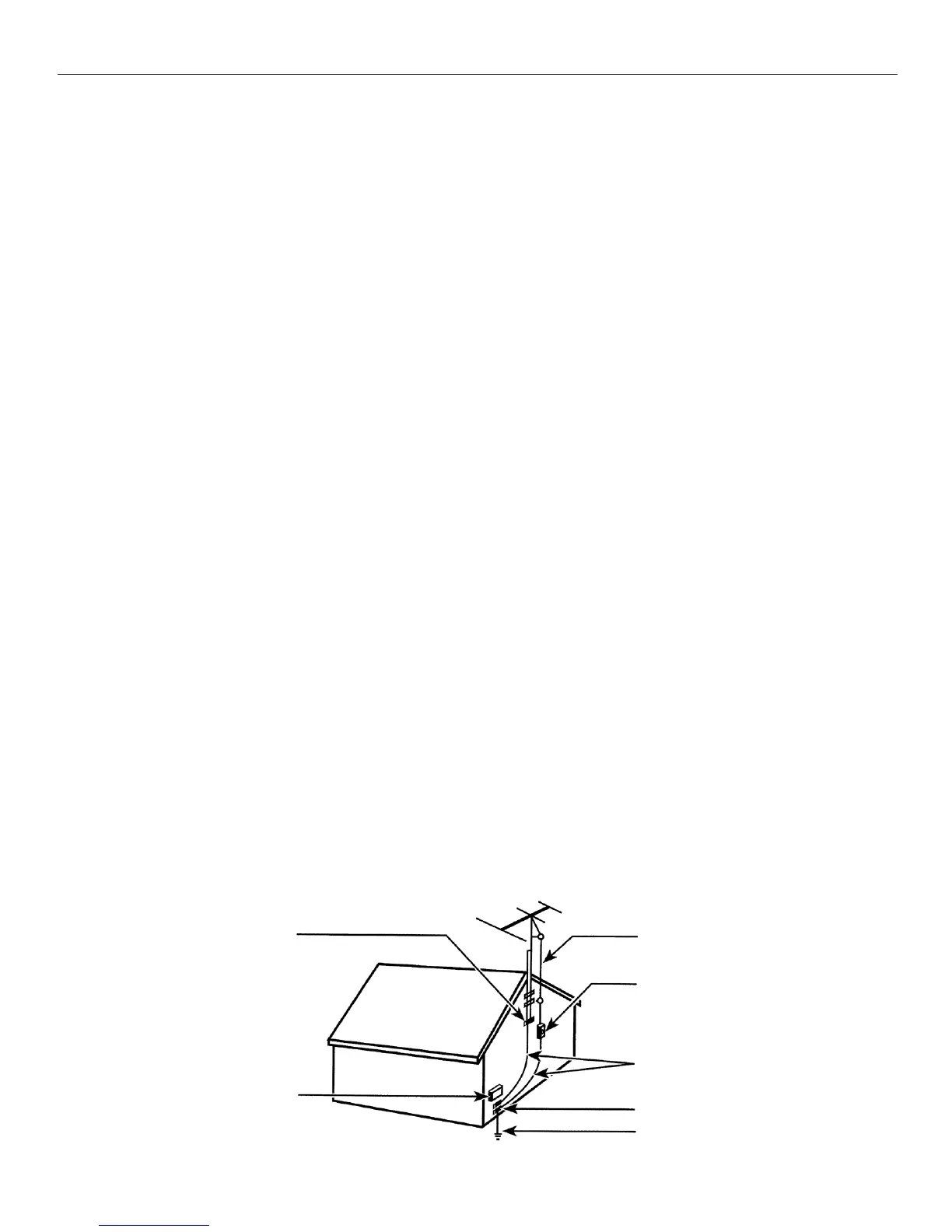IMPORTANT SAFETY INSTRUCTIONS
Before using the product, please follow and adhere to all warnings,
safety and operating instructions located on the product and in the user
book. Save all instructions for future reference.
Do not expose product to rain and do not use near water; such as, sink,
wet basement, swimming pools, etc.
Always leave sufficient space around the product for ventilaton. Do not
place product or on a bed, rug, in a bookcase or cabinet that may
prevent air flow through the vent openings.
Do not expose product to extreme temperatures such as found near a hot
radiator or stove, or in a car parked in the Summer sun.
Connect power cord only to AC power source as marked on the product.
Some products employ a polarized AC line plug (one blade is wider). This
is a safety feature. The plug will go in the power outlet only one way. If thge
plug doesn’t go into the outlet completely, turn the plug over and put it in
the other way. If it still doesn’t fit, contact a qualified electrician to change
the outlet. Do not defeat the safety purpose of the polarized plug.
Route power cord to prevent it from being pinched, or walked on, or
melted by a hot stove or radiator.
To clean cabinet, unplug AC power cord, then use a soft cloth dampened
only with water.
Do not place lit candles, cigarettes, cigars, etc. on the product.
Unplug AC power cord from outlet during a lightning strom or when
product is left unused for a long period of time to prevent damage due to
lightning or power line surges.
Care should be taken so that objects do not fall and liquids do not spill into
the product.
Never add accessories that the product has not been designed to
accommodate.
Use only the manufacturer’s approved mounting instructions and hardware
when installing product.
Do not attempt to disassemble the cabinet. This product does not contain
customer serviceable components.
Do not handle the unit or power cord when your hands are wet or damp.
•
•
•
•
•
•
•
•
•
•
•
•
•
•
•
Carts and Sands - The appliance should be used only with a cart that is
recommended by the manufacturer.
An appliance and cart combination should be moved with care. Quick
stops, excessive force, and uneven surfaces may cause the appliance and
cart combination to overturn.
Damage Requiring Service - This product should be serviced by qualified
service personnel when:
A) The power supply cord or plug has been damaged.
B) Objects have fallen, or liquid has been spilled into the product.
C) The product has been exposed to rain.
D) The product does not appear to operate normally or exhibits a marked
change in performance.
E) The product has been dropped, or the cabinet damaged.
When service or repairs are completed, ask the service technician to
perform the safety check described in the service manual and to confirm
that replacement parts have the same safety characteristics as the original
parts.
IF YOUR PRODUCT OPERATES ON BATTERIES, adhere to the following
precautions:
A) Any battery may leak electrolyte if mixed with a different battery type,
if inserted incorrectly, or if all batteries aren’t replaced at the same time.
B) Any battery may leak electrolyte or explode if disposed of in fire or an
attempt is made to charge a battery not intended to be recharged.
C) Discard leaky batteries immediately. Leaking batteries can cause skin
burns or other personal injury. When discarding batteries, be sure to
dispose of them in the proper manner, according to your state and local
regulations.
IF YOUR PRODUCT IS EQUIPPED WITH ANTENNA TERMINALS, and if an
outdoor antenna is connected, be sure the system is grounded so as to
provide some protection against voltage surge and built-up static charges.
An outdoor antenna should be located away from power lines.
IF PRODUCT IS TO BE CONNECTED TO A CATV SYSTEM, call the CATV
system installer’s attention to Article 820-40 of the NEC that provides
guidelines for proper grounding and, in particular, specifies that the cable
ground shall be connected to the grounding system of the building, as close
to the point of cable entry as practical.
•
•
•
•
•
•
•
Some of the following information may not apply to your particular product; however, as with any electronic product,
precautions should be observed during hanlding and use.
Ground Clamp
Antenna
Lead in Wire
Antenna
Discharge Unit
(NEC* Section 810-20)
Ground Conductors
(NEC* Section 810-21)
Ground Clamp
Power Service
Grounding Electrode System
(NEC* Art 250 Part H)
Electric Service
Equipment
Antenna Grounding According to the National Electrical Code
